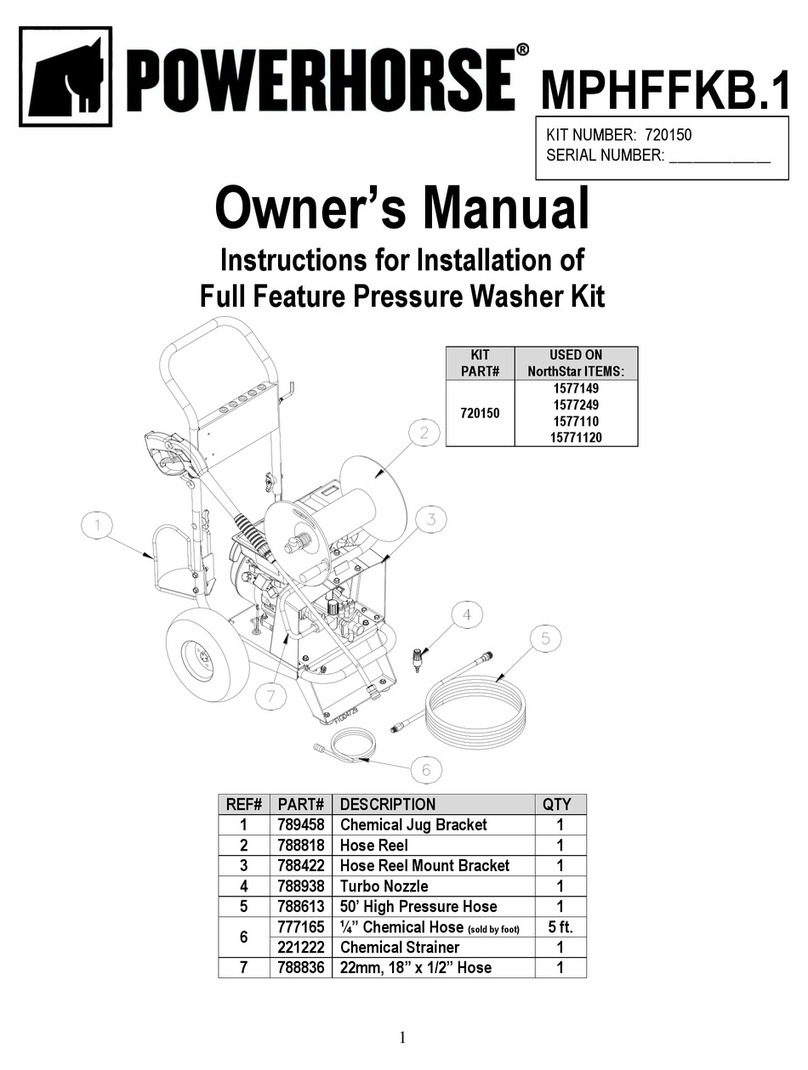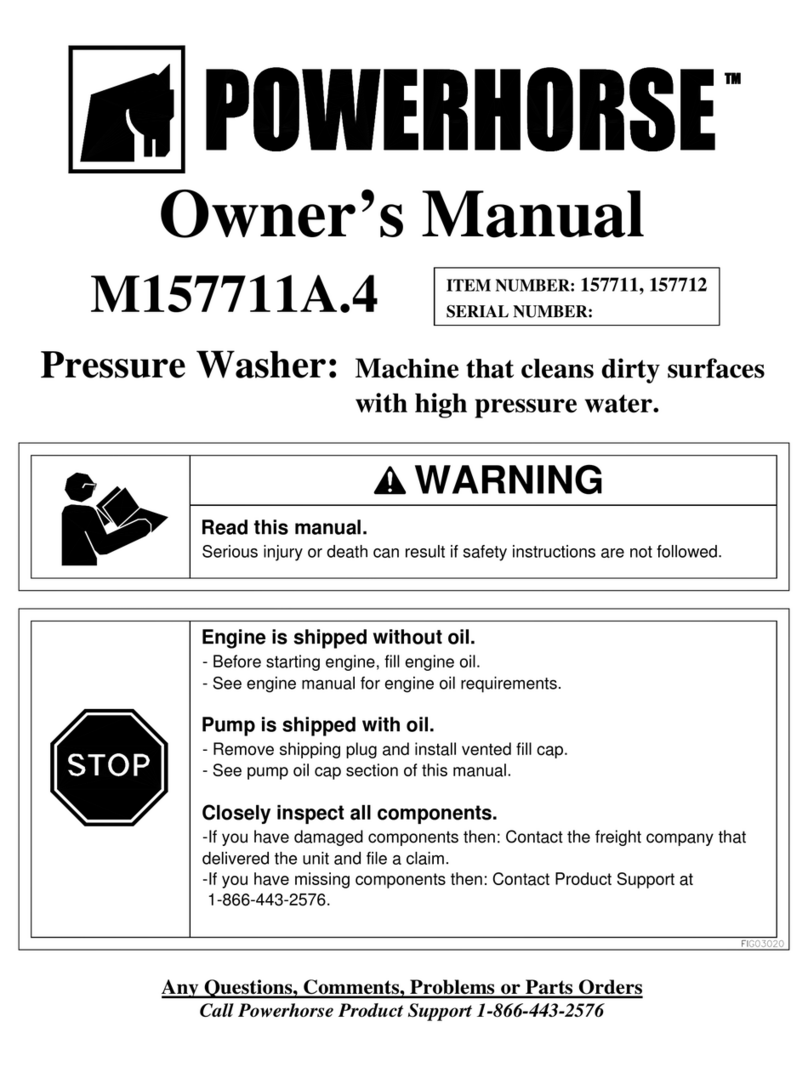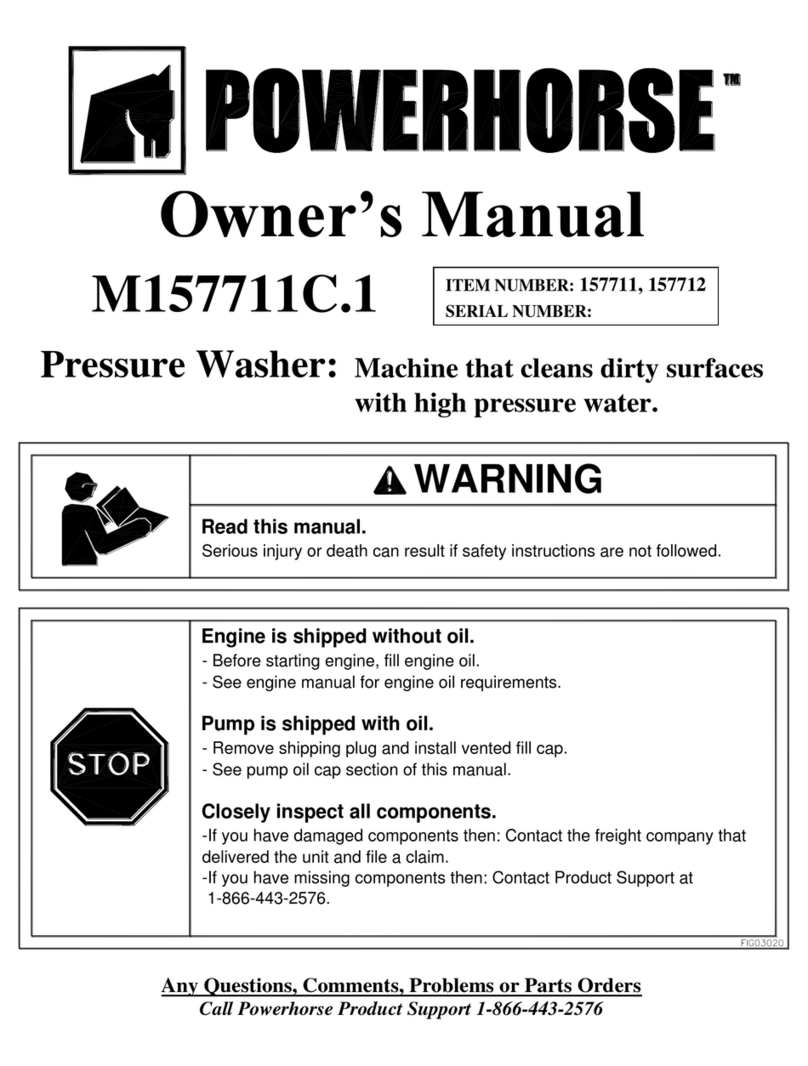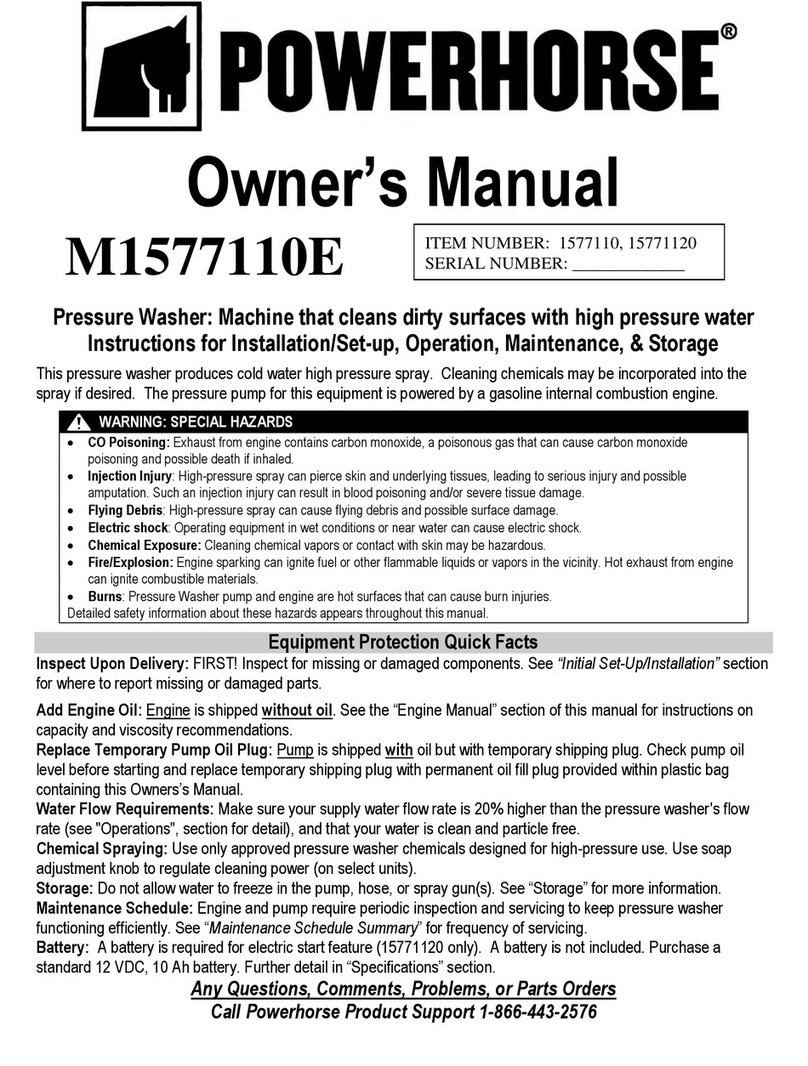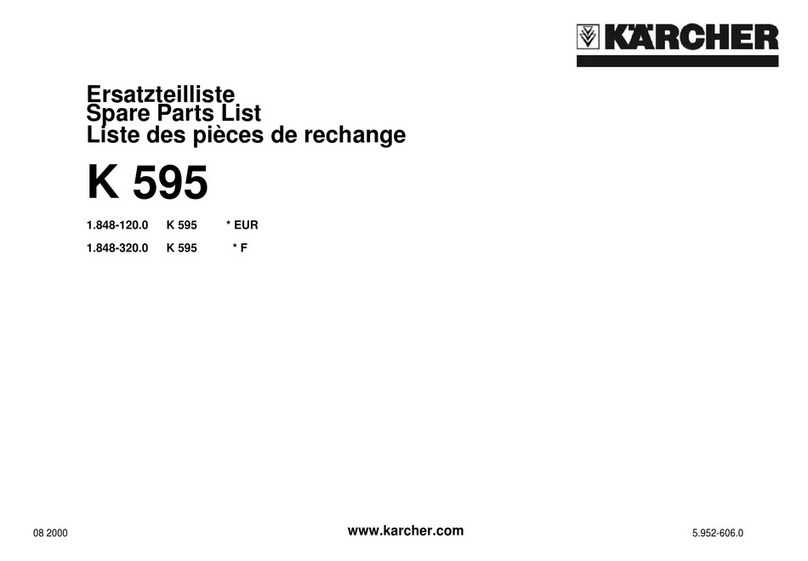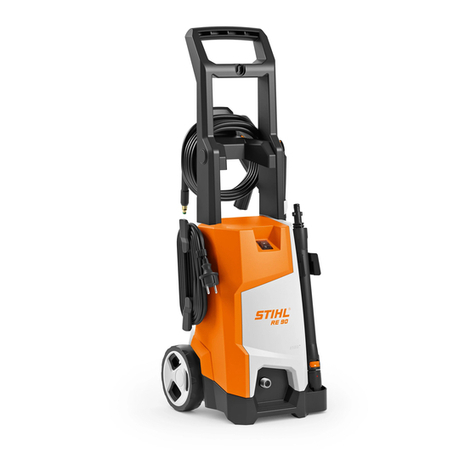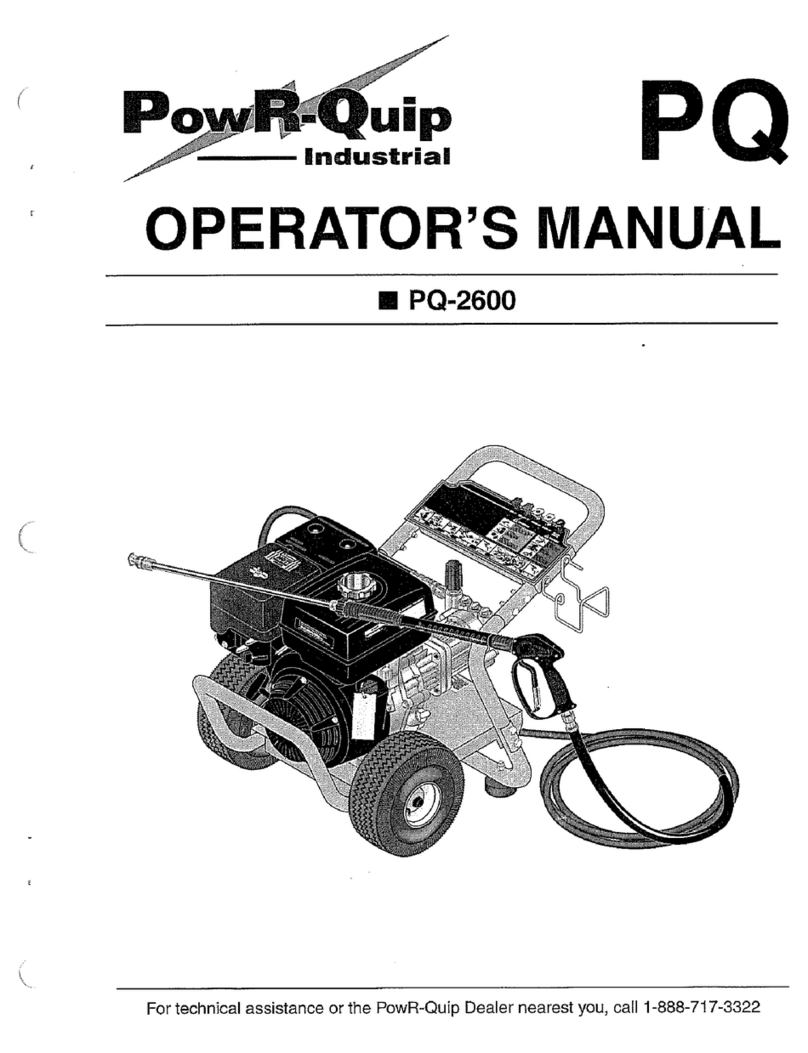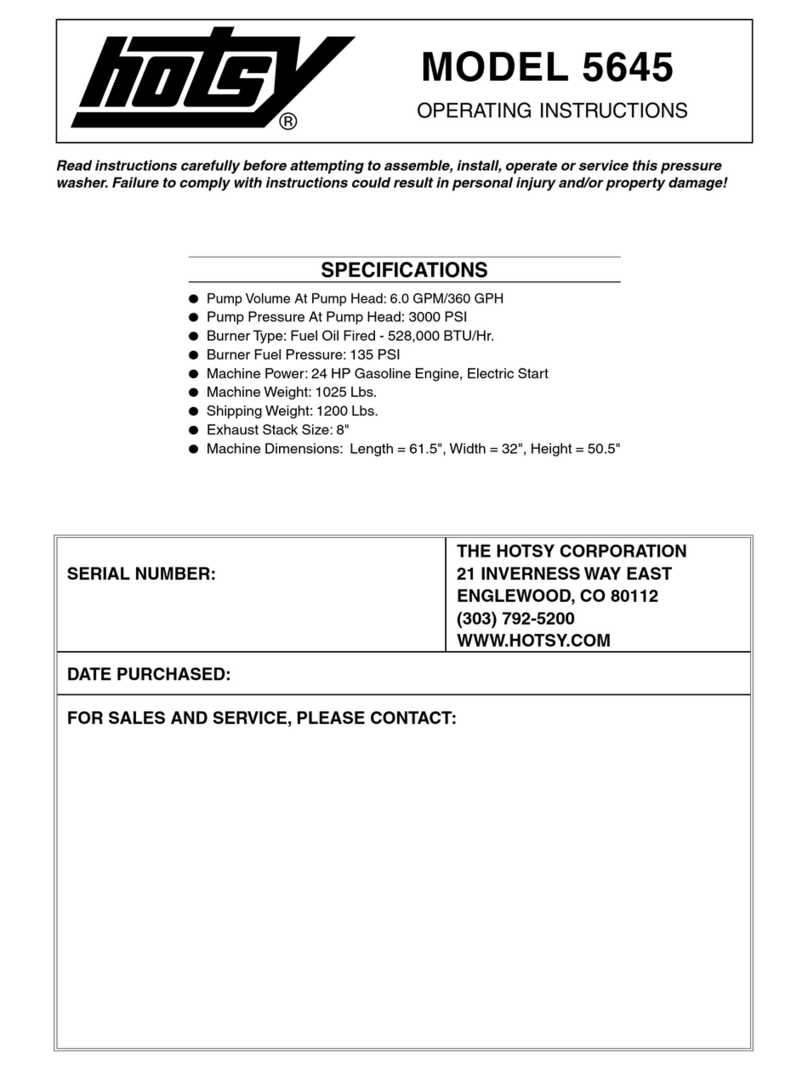Never cover the pressure washer during operation to allow free air cooling.
Always turn water supply on before turning the pressure washer on unless draining for storage.
Running the pump dry causes serious damage.
Not for use by or around children.
INJECTION HAZARD
Spray gun can kick back causing personal injury or loss of control of spray gun, causing injury
other persons. Hold spray gun with two hands while operating.
Equipment can cause serious injury if the spray penetrates the skin. Never point spray gun or
direct spray at people, animals, or pressure washer.
When unit is switched to the OFF position, pressure will still remain in unit. Point the spray gun in
a safe direction and engage trigger to release pressure. Do not direct discharge at persons or
animals.
Never operate the pressure washer without all components properly connected to the product
(handle, gun/wand assembly, nozzle, etc.).
Never put hand or fingers over the nozzle or spray tip while operating the pressure washer.
ELECTRIC SHOCK HAZARD
Inspect cord before using. Do not use if cord is damaged, frayed or split.
Keep all connections dry and off of the ground.
Do not plug in power cord when wet or while standing on damp/wet ground.
Always move switch on product to “Off” position before connecting or disconnecting power cord to
electrical outlets.
Do not use an extension cord with this product.
Connect only to a grounded outlet equipped with a ground fault circuit interrupter (GFCI).
Do not attempt to service or open this product while it is connected to an electrical source. Service
should only be completed by a qualified technician.
When servicing, use only original equipment manufacturer (OEM) replacement parts.
This product is provided with a ground fault circuit interrupter (GFCI) built into the power cord plug.
If replacement of the plug or cord is needed, ensure the GFCI is included with the new cord.
Connect to individual branch circuit only.
This device provides additional protection from the risk of electrical shock. Plug the Ground Fault
Circuit Interrupter (GFCI) into a power outlet. Indicator should turn red. TEST BEFORE EACH
USE. Press the TEST button. Red indicator should disappear. Press RESET button again for use.
Do not use if above test fails.
Should replacement of the plug or cord become necessary, use only manufacturer replacement
parts that include GFCI protection. All services must be done by an Authorized Service Technician.
Unauthorized service will void warranty.
Connect directly to an outlet. Do not use the pressure washer with an extension cord. The use of

